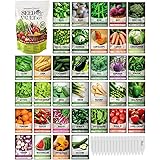KFN 2PCS 4x1.8x1FT Galvanized Raised Garden Bed,Raised Garden Bed Kit-Oval Metal Vegetable Box,Large Planter Flower Boxes Outdoor,Planting for Vegetables,Flower,Herb,Grey,0.7mm
$48.99 (as of 13:29 GMT -05:00 - More infoProduct prices and availability are accurate as of the date/time indicated and are subject to change. Any price and availability information displayed on [relevant Amazon Site(s), as applicable] at the time of purchase will apply to the purchase of this product.)SnugNiture Galvanized Raised Garden Bed Outdoor, 2 Pcs 4x2x1ft Oval Metal Planter Box for Planting Plants Vegetables, Brown
$52.99 (as of 13:41 GMT -05:00 - More infoProduct prices and availability are accurate as of the date/time indicated and are subject to change. Any price and availability information displayed on [relevant Amazon Site(s), as applicable] at the time of purchase will apply to the purchase of this product.)1. Introduction to Vegetable Gardening
Vegetable gardening is a great way to add fresh, healthy produce to your diet while also enjoying the benefits of outdoor activity and connection with nature. Whether you’re new to gardening or an experienced green thumb, starting a thriving vegetable garden can be easy and rewarding. Here are five simple steps to help get you started:
2. Choosing the Right Location for Your Garden
The location of your vegetable garden is crucial to its success. Look for a spot that receives at least six hours of sunlight per day, has well-draining soil, and is easily accessible from your house. Avoid areas near trees or buildings that may cast shade over your plants, as well as locations prone to flooding or waterlogged soils. Once you have found the perfect spot, clear away any weeds or debris and prepare the area for planting.
3. Preparing the Soil and Fertilizing
Before you start planting seeds or saplings, it’s essential to prep the soil in your vegetable garden. Begin by removing any large rocks or debris, then till the soil to a depth of 8-12 inches using a rototiller or hand cultivator. Add organic matter such as compost, manure, or grass clippings to enrich the soil and improve its structure. Finally, apply a balanced fertilizer according to package instructions to give your plants a boost of nutrients.

4. Planting Seeds or Saplings
Once your soil is ready, it’s time to start planting! If you’re planting seedlings, carefully remove them from their pots and gently tease apart any tangled roots. Place each seedling into the ground at the same depth it was growing at previously, and space them about 6-12 inches apart depending on the size of the mature plant. For direct sowing, scatter the seeds onto the prepared soil and cover them with a thin layer of soil. Water lightly and keep the soil moist until the seeds germinate.
5. Watering, Weeding, and Harvesting
Watering, weeding, and harvesting are key tasks throughout the growth cycle of your vegetable garden. Keep the soil evenly moist but not saturated, and avoid getting water on the leaves to prevent disease. Weed regularly to prevent competition between your plants and unwanted species. When it comes time to harvest, pick only what you need and leave some for the plants to continue growing. Enjoy your homegrown veggies and celebrate your successful vegetable gardening journey!













































